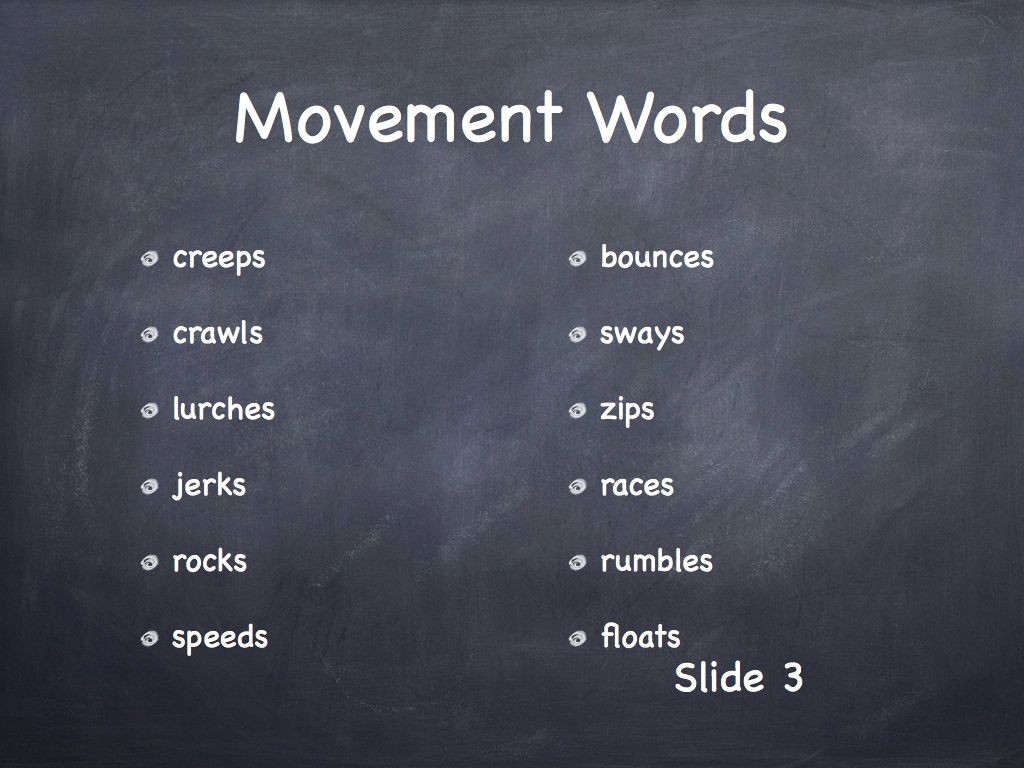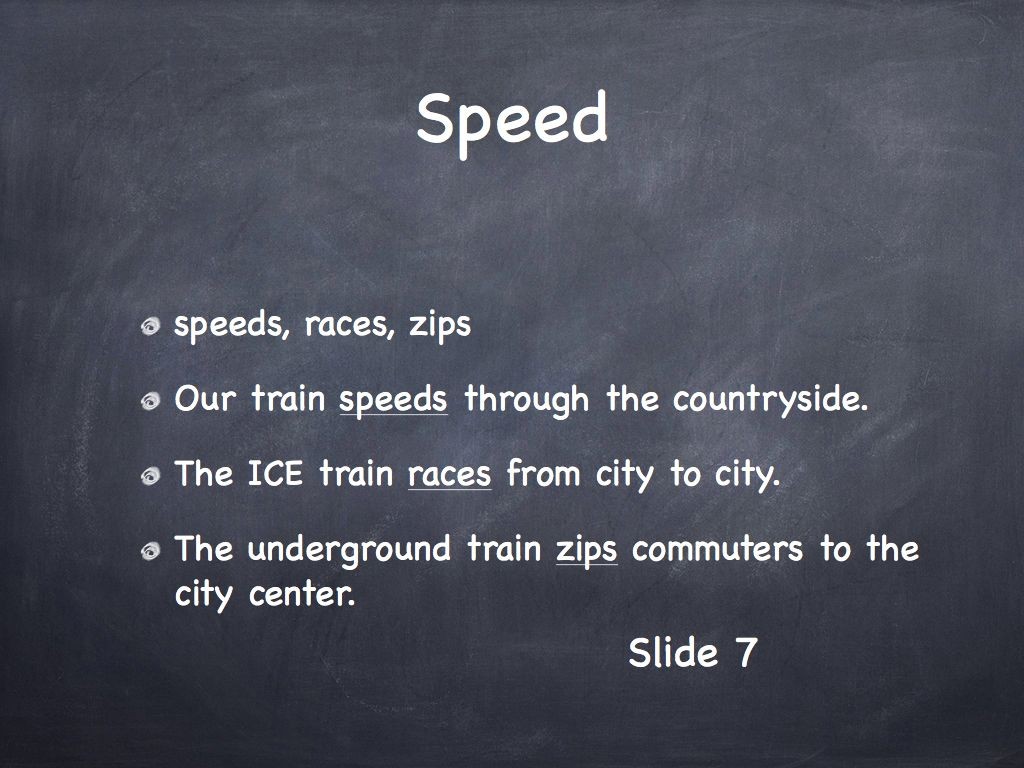
Watching Episode 11 of Ramping Up your English
Verbs are sometimes called action words. In this episode, we explore some ways to describe movement using certain verbs. We also talk another ride on Amtrak’s Sunset :limited. To watch the entire episode ad-free, click here for Archive.org. You can also download the episode from this site.
Welcome Aboard!
Welcome to the Episode 11 page of Ramping Up your English! This episode saw the Westbound Sunset Limited reach its destination of Los Angeles through El Paso, Texas, New Mexico (along the Mexican border), and the Palm Springs desert in California.
Watch Episode 11 in segments: Click the segment you want to see: Segment one. Segment 2. Segment 3.
Language Objectives
Our English focus was on special verbs; action words that not only name an action but also describe the action. We began with a list of movement words that had the type of movement embedded in the verb. We started with a simple sentence about a train’s movement.
Academic Content Objectives
Geography: Describe the landforms found in Southern Arizona and California
Language Learning Sequence







Lesson Summary
We pointed out in the program that using the verbs that indicated a certain type of movement was smoother and indicated a higher level of proficiency than using the word “move” and adding an adverb.
Objective: Use specific verbs to indicate and describe movement of various kinds.
Riding the Sunset Limited
We’ve been enjoying our journey on the Sunset limited for several episodes, but we now wave goodbye to this notable train. We finished our westward journey on the Sunset Limited with the following Video clips:
Videos used in Episode 11
Sunset Limited Westbound, Part 3
Sunset Limited Westbound, Part 4
Bonus Episodes
In addition to these clips that will be seen in Episode 11, you get two more bonus clips. There’s nothing you have to do. Just enjoy!
!RUE Sunset Limited Westbound 1 Long
See this same video without ads at archive.org. Click here.
!RUE Sunset Limited Westbound 2 Long
Same video on archive.org… Click here.
Working with Special Verbs: Review
Verbs are words that show action or being, so a verb is what tells you what’s happening in a sentence. Normally, an ADVERB tells you how that action happens.
In describing the types of movement you might experience on a train, some verbs seem to have the adverb embedded in them. In slide two, the sentence uses the word “moves” to tell the reader what the car does; but it doesn’t tell you HOW it moves.
Slide 3 (above) contains a list of verbs that indicate different types of movement. No adverbs are needed as long as you choose the right verb. In slide 4, the sentence contains the verb “floats” to indicate the sensation of movement on a train at times.
Slide 5 has an example of both a perception of movement and a reality of movement using the verb “sway.” Slide 6 has examples of describing sudden motion, while slide 7 uses verbs that describe motion by the speed of the movement.
As explained in the episode, it’s often best to use these self-descriptive verbs rather than using the verb “moves” and adding an adverb. If you do want to use “move” and a description, I suggest using the NOUN form of the word move (movement or motion), and then use the “ing” form of the adjective, as shown in slide 9.
Homework
Use some of the verbs above to describe the movements of an animal. Write 5 sentences. Example: My cat lunched forward when she pounced on the yarn.
Next Episode
Now we discover another notable train that came from Southern Pacific heritage. Below is a link to our next episode page:
Thanks for visiting the Episode 11 page of Ramping Up your English!